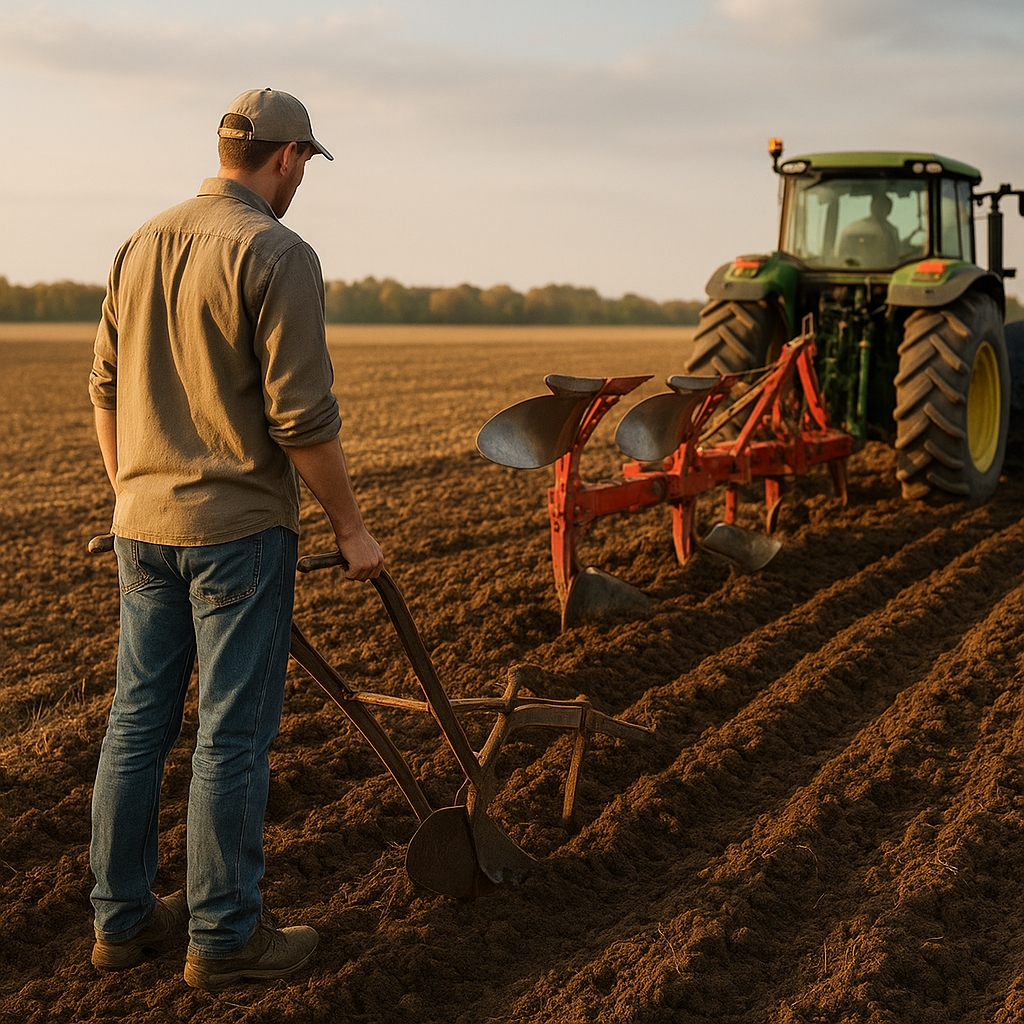Choosing the right plow can transform your fieldwork from a grueling task into a streamlined operation. With numerous factors to weigh, ranging from soil conditions and machine performance to budget constraints and long-term investment value, selecting between manual and hydraulic plows demands careful analysis. This article presents practical plowing tips and in-depth guidance to help you achieve maximum efficiency and profitability.
Comparing Manual and Hydraulic Plows
Manual Plows: Proven Simplicity
Manual plows have been favored by generations of small-scale farmers and gardeners. Their straightforward design, often consisting of a steel share and adjustable beam, makes them easily repairable in the field. These implements excel in situations where power sources are limited, offering a reliable solution for anyone equipped with a tractor’s three-point hitch or a draft animal. Despite their simplicity, modern manual plows incorporate refined materials and ergonomics that enhance durability and ease of operation.
- Affordability: Generally lower upfront cost compared to hydraulic machines.
- Lightweight frame for easier attachment and transport.
- Minimal parts mean fewer breakdowns.
- Ideal for small to medium plots or gardeners.
However, manual plows require frequent adjustments for changing soil textures. Each time you encounter heavier clay or rocky soil, you may need to tweak depth and angle settings by hand.
Hydraulic Plows: Power and Precision
Hydraulic plows represent a leap in mechanized tillage, using fluid-driven cylinders to control beam angle, moldboard tilt, and depth on the fly. This feature allows operators to adapt to varying field conditions without stopping work—immensely valuable for large-acreage farms. Advanced models come with electronic sensors and control modules that monitor soil resistance and automatically adjust parameters, delivering consistent furrow quality.
- Automatic depth control maintains uniform soil turnover.
- High adaptability to wet, stony, or uneven terrain.
- Reduced operator fatigue thanks to on-the-go adjustments.
- Enhanced productivity when covering large fields.
Of course, hydraulics introduce complexity. Leaks, hose failures, or valve issues can lead to costly downtime. Regular maintenance by a skilled technician is vital to preserve performance and avoid leaks that compromise safety.
Key Considerations Before Buying
Before selecting between manual and hydraulic equipment, evaluate these critical factors:
- Field Size: Hydraulic plows shine in extensive operations over 50 acres. For under 10 acres, a manual plow often suffices.
- Soil Type: Rocky or compacted clay soils benefit from hydraulic push and angle modifications; sandy loam may only need a simple manual design.
- Tractor Capacity: Ensure your tractor’s hydraulic flow rate and lifting capacity match the plow’s requirements. Undersized tractors can stall or overheat.
- Budget Constraints: Compare upfront cost versus projected gains in efficiency. Manual plows have lower initial expenses but can slow down work in challenging terrains.
- Operator Skill: Manual plows require hands-on adjustments and experience in reading the field. Hydraulic versions simplify operation but demand technical know-how for troubleshooting.
- Long-Term Maintenance: Factor in the lifespan and service costs. Hydraulic systems may need specialized parts and labor, whereas manual plows often rely on generic hardware.
Maintenance and Best Practices
Routine Inspections
Preventive checks can catch wear before it escalates. Inspect plow points, shares, and moldboards for cracks or excessive thinning. Pay special attention to pivot pins and bushings—looseness here can misalign furrow depth and waste tractor fuel.
Proper Lubrication
Consistent lubrication of moving parts is non-negotiable. For manual plows, grease all adjustment threads and hinge points. Hydraulic plows require both grease for mechanical joints and the recommended hydraulic fluid, which should be tested for contamination every season.
Safe Storage
Protect your investment by storing the plow under cover. Moisture accelerates rust, particularly on steel moldboards. If indoor space is limited, at least shield critical components with tarps and apply anti-corrosion sprays on exposed metal.
Blade and Disc Care
- Sharpen cutting edges before each season to reduce draft force.
- Replace discs or roller bearings showing pits or chipping.
- Adjust sideboards to ensure proper trash flow and reduce clogging.
Advanced Techniques and Tips
Optimizing Plow Depth
Depth control is crucial for promoting healthy root development and retaining moisture. A depth of 6–8 inches suits most grain crops, but deeper plowing (up to 12 inches) may be necessary to break subsoil compaction. Use tractor wheel ballast to maintain traction when slicing deeper furrows.
Matching Ground Speed
Ground speed affects both the quality of the till and fuel consumption rates. For manual plows, maintain 4–6 mph; hydraulic systems can handle 7–8 mph if soil conditions allow. Going too fast can result in poor soil inversion and leave debris on the surface.
Combining Soil Amendments
Integrate lime or fertilizer into your plow operation by broadcasting amendments just ahead of the plowshare. This approach ensures uniform mixing into the topsoil. Hydraulic plows can be equipped with side-delivery hoppers or injection coulters to place nutrients directly at root zone depth.
Contour Plowing and Erosion Control
For sloped fields, employ contour plowing—running furrows along elevation lines. This method slows runoff, reduces erosion, and enhances water infiltration. Manual plows can be set on variable incline mounts, but hydraulic tilt adjustments offer finer control.
Precision Guidance Systems
High-end hydraulic plows integrate GPS guidance to ensure straight furrows, minimize skip lines, and reduce overlap. Such systems can cut input costs by up to 15% through precise application and reduced passes.
By understanding the strengths and limitations of manual versus hydraulic plows—and by following proper maintenance, adjustment, and operational techniques—you can maximize land productivity and extend the lifetime of your equipment. The right choice hinges on your unique field conditions, available resources, and long-term agricultural goals.
